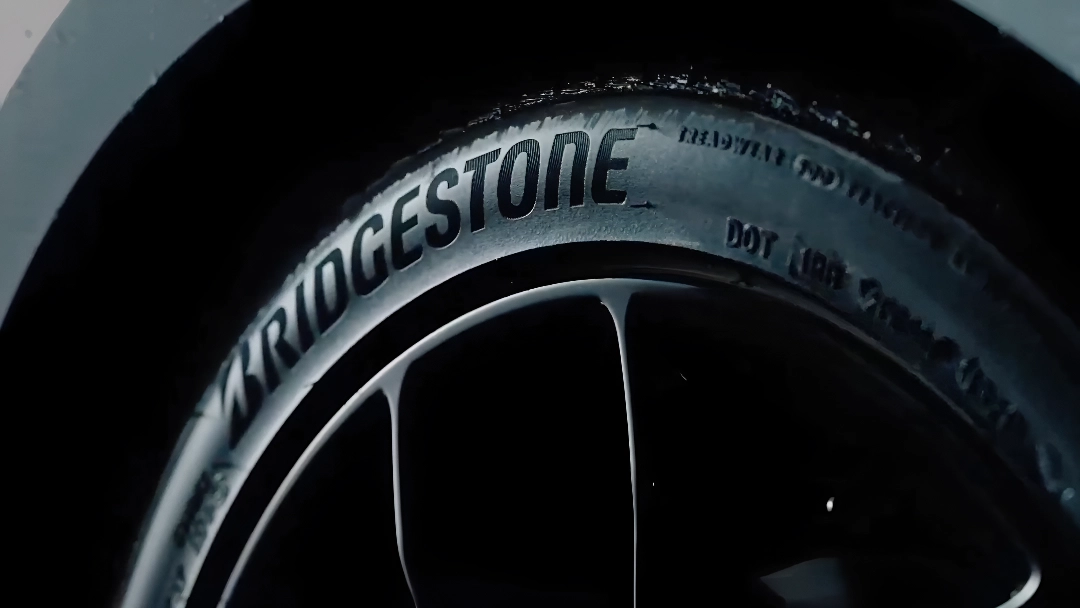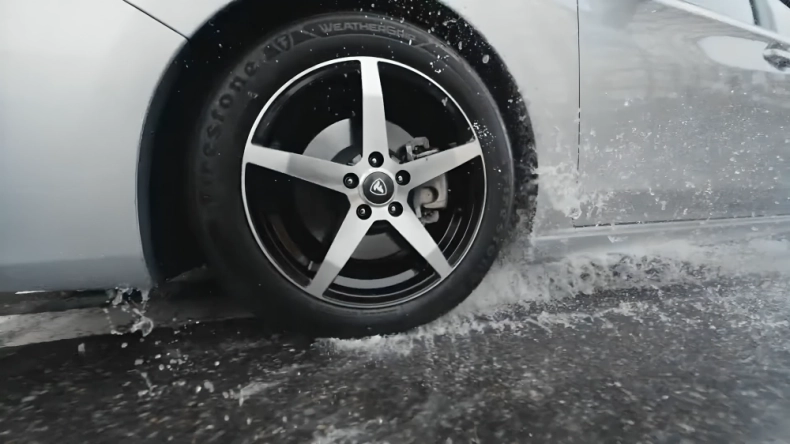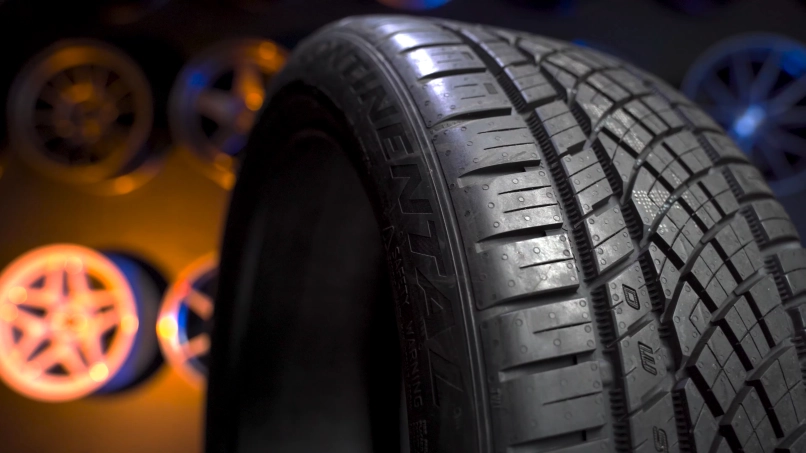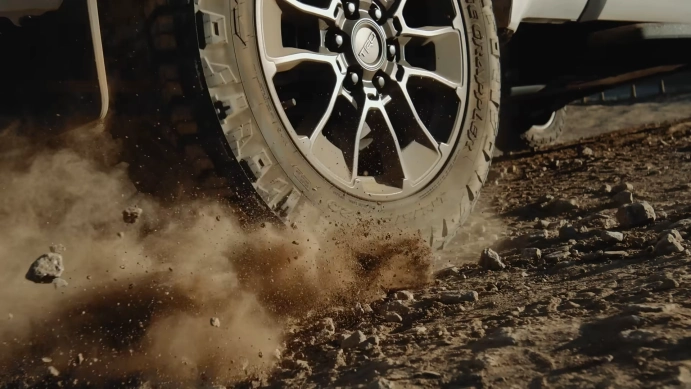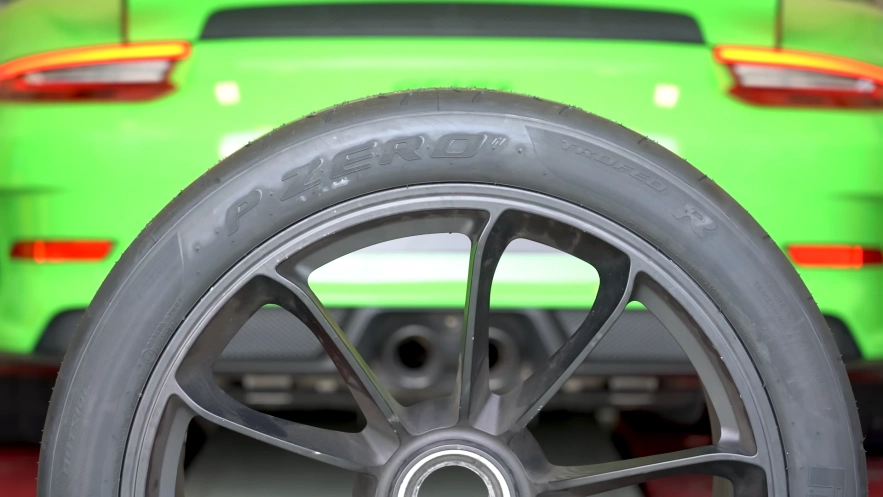Since its Paris Auto Show debut in 2017, the Pilot Sport 4 S has reigned as the benchmark Max Performance Summer tire, blending Le Mans–derived compounds with street-legal versatility. Born of Michelin’s Total Performance ethos and validated by OEMs like Porsche, BMW M, and Mercedes-AMG, it delivers class-leading braking, razor-sharp steering, and surprising tread life—even under the fiercest demands.
In this review, we’ll explore its rich heritage, dissect every manufacturing innovation, and put its real-world prowess under the microscope—so you know exactly what sets it apart and whether it belongs on your ride.
From here, let’s turn back the clock and discover how a lineage of racing-bred rubber evolved into today’s ultimate summer tire.
Tire History & Heritage
- Origins in Pilot X (1980s): Michelin’s high-performance journey began with Pilot X, the first street tire built from racing know-how. It introduced aramid-reinforced belts—borrowed from aerospace—to road rubber, dramatically improving stability at speed and laying the groundwork for decades of innovation.
- Pilot Super Sport (2006–2017): Building on Pilot X, the Super Sport debuted bi-compound tread blocks and a nylon-encased belt for exceptional dry grip. It shattered lap-time records at circuits worldwide and became the OEM choice for supercars like the Ferrari 458 Italia, though critics cited room for improved wet performance.
- Pilot Sport 4 S (2017–present): Earning the “King of All Tires” moniker, it introduced a tri-compound asymmetric tread: a low-void hybrid outer for dry precision and a silica-enriched inner for wet braking. Michelin refined carcass stiffness and sidewall construction to marry track-ready feedback with street comfort, winning OEM fitments on the BMW M3/M4, Mercedes-AMG C6.3, and more.
- Aftermarket Pinnacle (2023+): As Michelin reserves the Sport S 5 for factory installations, the PS 4 S remains the top aftermarket choice for enthusiasts seeking uncompromised performance without waiting for OEM fitment.
These milestones chart a relentless pursuit of grip, feedback, and longevity—proof that Michelin learns one lap at a time.
Every innovation begs the question: how do they actually engineer such breakthroughs? Let’s dive into the tech.
Technologies Used in Manufacturing
- Tri-Compound Asymmetric Tread: Side-by-side Le Mans-derived elastomers optimize dry and wet grip. The low-void outer shoulder uses a high-Z hybrid rubber for maximal traction and braking on hot pavement, while the center ribs and inboard shoulder employ a silica-rich mix for rapid water evacuation and consistent wet performance.
- Dynamic Response Technology: A layer of aramid and nylon sits above twin steel belts, ensuring lightning-quick steering input transmission and preserving footprint integrity at speed, minimizing tread deformation under heavy lateral loads.
- Variable Contact Patch 3.0: Advanced computer modeling shaped the contact patch to distribute pressure evenly, eliminating hot spots, reducing wear, and improving heat dissipation during sustained track sessions.
- Silica-Infused Wet Compound: Ultra-high silica concentration in inner ribs and grooves boosts adhesion on slick roads, delivering best-in-class 50–0 mph wet braking and exceptional aquaplaning resistance.
- Premium Touch Design®: Deep-cut velvet sidewalls and integrated rim protectors confer premium aesthetics and guard against curb damage—marrying form with function for the discerning enthusiast.
- Orange Oil & Eco Materials: Incorporating renewable orange oil reduces petroleum reliance and enhances rolling resistance—two-thirds of the PS 4 S range now earns a C grade for fuel-saving efficiency.
- Carbon Black Reinforcement: Specially treated carbon black in the rubber matrix boosts wear resistance without compromising grip, unlocking up to 9% more mileage than its predecessor.
With these technologies intertwined, the PS 4 S transcends typical trade-offs between grip, wear, and efficiency.
Next, let’s analyze how all that tech translates to real-world performance across dry, wet, circuit, and beyond.
Performance in Various Conditions
Braking & Water Evacuation Performance
The Pilot Sport 4 S delivers class-leading stopping power on dry pavement as well as on wet surfaces. In independent 60–0 mph dry tests, it stops in just 106 ft, out-braking its nearest rival by over 9 ft.
Wet stopping from 50–0 mph clocks in at 97 ft, a margin of more than a car length over competitors, thanks to its silica-infused inner shoulder compounds and optimized groove channels.
Its asymmetric tread—with wide circumferential and lateral grooves—evacuates water so efficiently that straight-line aquaplaning resistance extends up to approximately 44.7 mph (72 kph), outpacing competitor patterns.
Deep irrigation channels paired with silica-enriched compounds maintain stable tire-to-road contact in standing water, ensuring repeatable braking performance even in torrential downpours
Dry Performance
Beyond braking, the PS 4 S excels under acceleration and on-track lap times. Its low-void outer shoulder and hybrid elastomer compound translate into outstanding launch traction, enabling high-powered cars to achieve 0–60 mph in under 3.7 s without excessive wheelspin when correctly balanced.
On a 235/35 ZR19 test car, it recorded a 39.25 s dry circuit lap—the fastest in its class—thanks to minimal carcass flex and consistent adhesion through repeated high-G maneuvers.
Wet Performance
In addition to its benchmark wet braking, the PS 4 S maintains tenacious wet-track performance. Controlled water dispersion via its asymmetric tread pattern allows it to hold over 0.90 g of lateral grip on damp circuits, with best-in-class 37.23 s wet lap times in 235/35 ZR19 tests.
Even under combined cornering and braking in the rain, the tire resists hydroplaning up to depths of 10 mm, preserving directional stability and shortening stopping distances in emergency maneuvers.
Traction & Grip
The multi-compound design yields extreme friction levels: on dry skidpads, it sustains up to 1.45 g of lateral acceleration at the limit, among the highest measured for any road tire.
Its silica-rich inner shoulder also generates impressive adhesion in transitional grip conditions, delivering consistent throttle response and minimal slip from roll-out to full power application.
Cornering & Stability
Dynamic Response Technology and Variable Contact Patch 3.0 combine to keep the footprint flat and uniform, even under lateral loads exceeding 1.30 g. This translates to razor-sharp turn-in and predictable slip-angle behavior, with carcass reinforcement preventing mid-corner deformation and preserving steering precision through fast sweepers
Fuel Efficiency & Rolling Resistance
Despite its ultra-sticky compounds, the Pilot Sport 4 S only slightly raises the energy needed to keep rolling, thanks to eco-aware materials. Rolling resistance typically accounts for 5–15 % of fuel use in gasoline cars, and up to 25 % of an EV’s energy losses.
Compared to a low-resistance touring tire, the PS 4 S’s higher rolling resistance cuts fuel economy by just 1–2 %—about half a mile per gallon on a 25-mile-per-gallon car, or 1–2 miles of EV range on a 200-mile trip. Most sizes still earn a “C” EU efficiency grade, matching other premium performance tires
Comfort & Noise
Michelin tuned sidewalls to absorb minor imperfections, keeping highway roar in the 60–70 dB range—on par with most performance-focused rubber. Although firmer than touring tires, the PS 4 S strikes a solid balance: you feel the road for feedback without suffering harshness on smooth asphalt.
Wear & Warranty
Rated UTQG 300 AA A with a 30,000-mile warranty, owners routinely report 25,000–30,000 miles of spirited use before reaching wear bars. Variable Contact Patch 3.0 and optimized shoulder shapes deliver remarkably even tread wear, even when abused on occasional track days.
All told, the Pilot Sport 4 S doesn’t just excel in one scenario—it adapts seamlessly from boulevard to backroad to racetrack.
Before we compare it to its fiercest rivals, let’s pause to appreciate some head-turning details.
Competitive Comparison
| Tire Model | 60–0 mph Stop | 50–0 mph Stop | Dry Lap (235/35 ZR19) | Warranty | RR Grade |
| Pilot Sport 4 S | 106 ft | 97 ft | 39.25 s | 30,000 miles | C–D |
| Continental ExtremeContact Sport 02 | 115.9 ft | 108 ft | 40.10 s | 30,000 miles | B–C |
| Bridgestone Potenza S-04 | 119.4 ft | 109 ft | 40.50 s | 25,000 miles | C–D |
| Pirelli P Zero PZ4 | 118.3 ft | 107 ft | 40.75 s | 30,000 miles | C–D |
| Goodyear Eagle F1 Asymmetric 6 | 115.2 ft | 105 ft | 40.30 s | 25,000 miles | C–D |
The PS 4 S leads in braking and lap times, matches or beats warranties, and trades only marginally higher rolling resistance for a performance edge no rival can touch.
Now, let’s uncover a few surprising stories behind this Michelin marvel.
Tire Talk: Motorsport Lore & Performance Trivia
- Le Mans DNA: Compounds are directly derived from Michelin’s prototype classes at the 24 Hours of Le Mans, designed to endure 24-hour heat cycles with minimal performance drop-off.
- Checkered-Flag Sidewalls: The Premium Touch Design in 21″ + sizes subtly embeds a checkered-flag motif, a nod to its racing heritage visible only upon close inspection.
- Transatlantic Craftsmanship: Produced in Michelin’s Greenville, SC, and Clermont-Ferrand, France plants, it marries U.S. production scale with European precision quality control.
- Ferrari’s Choice: Official tire supplier for the Ferrari 296 GTB, underscoring OEM trust and proving street-legal capability on one of the world’s most demanding supercars.
- Eco-Credentials: Uses renewable orange oil to cut petroleum usage by up to 11% and qualifies for recycling programs that transform worn PS 4 S into playground surfaces and rubberized asphalt.
These tidbits underscore how the PS 4 S is as crafty in its backstory as it is on the tarmac.
Let’s answer the burning questions enthusiasts ask most.
Frequently Asked Questions
Q1: Are Pilot Sport 4 S good in the rain?
Yes—97 ft stopping from 50 mph is best-in-class, thanks to deep lateral grooves and silica-rich compounds that expel water instantly.
Q2: Can I use them year-round?
No—designed for above 40°F only. Freezing temps stiffen compounds, reducing grip and risking cracks.
Q3: How long will they last?
Rated UTQG 300 AA A with a 30,000-mile warranty; expect 25,000–30,000 miles under spirited driving before wear bars appear.
Q4: Are they noisy?
Highway noise hovers around 60–70 dB, comparable to peers, with firmer sidewalls transmitting modest texture feedback.
Q5: How do they compare to Pilot Super Sport?
They improve wet braking by ~10 ft, feature stiffer casing for sharper feedback, and sport eco-compounds that extend tread life by ~9%.
Q6: Do they suit EVs?
Yes—their low rolling resistance variants and robust belt package handle instant EV torque well; expect a ~2% range hit on most EVs.
Q7: What wheels fit best?
Stick to OEM-specified diameter, width, and offset. Wider aftermarket wheels may require fender rolling to prevent rub.
Q8: Can I track these tires regularly?
Absolutely—they tolerate occasional track use, though monitor pressures and inspect shoulders for chipping after aggressive camber loads.
Q9: How should I break them in?
Run 50–100 miles of moderate driving to scrub off mold release, then you’ll unlock full grip on the track or road.
Q10: Does Michelin offer a run-flat PS 4 S?
No—there’s currently no run-flat version; for that feature, consider OEM-specific models or Michelin’s Pilot Sport All Season 4 ZP.
With all that covered, let’s weigh the strengths and trade-offs.
Pros & Cons
Pros
- Class-leading dry braking and lap times
- Best-in-class wet braking (97 ft @ 50 mph)
- Exceptional steering precision via Dynamic Response
- Uniform wear from Variable Contact Patch 3.0
- Backed by a 30,000-mile warranty
- Subtle motorsport styling with velvet sidewalls
- Le Mans-derived tri-compound design for balanced performance
- Efficient rolling resistance (C–D) for moderate fuel savings
- OEM fitments on supercars and high-performance sedans
- Renewable orange-oil compounds for reduced environmental impact
Cons
- Premium price premium over mainstream performance tires
- Summer-only use; stalls in cold or snowy conditions
- A firmer ride may feel harsh on rough roads
- No factory balance marks can lead to extra wheel weights
Next, hear from drivers who’ve pushed these tires to their limits.
Real-World Feedback
The PS 4 S has won over weekend warriors and canyon-carving enthusiasts alike, earning praise for its tenacious grip and razor-sharp steering feel, even when temperatures soar or roads get twisty.
Everyday drivers, however, often point out its firm sidewalls relay more bumps and road buzz into the cabin. On Tire Rack’s surveys, it scores 8.8/10 for ride quality and 8.6/10 for noise—solid marks, but still a reminder of its sporty bias Tire Rack.
Budget-minded commuters also note the stickier summer compound won’t last like all-season rubber. With a UTQG treadwear rating of 300 and a 30,000-mile warranty, it’s plenty durable for spirited driving, but you’ll likely see faster wear than on touring.
Tuners love that the PS 4 S tolerates aggressive camber setups without early edge wear, yet warn that running pressures above Michelin’s recommendations can make the ride feel even harsher.
A few enthusiasts report minor shoulder chipping after hard curb strikes or back-to-back hot-lap sessions, but most agree the tire’s carcass holds up remarkably well under stress
Maintenance Instructions
- Cold Pressure Check: Front 35 psi / Rear 38 psi for street; adjust ±3 psi for track days and load.
- Regular Rotation: Every 6,000–8,000 miles, following an X-pattern to preserve asymmetric wear.
- Alignment Inspections: Ensure camber/toe specs match OEM recommendations to avoid edge scalloping.
- Gentle Cleaning: Use mild soap; avoid solvents that degrade silica compounds or velvet sidewalls.
- Seasonal Storage: Store upright in a cool, dark area; use tire totes to prevent sidewall distortion.
By following these simple steps, you’ll preserve performance, style, and warranty coverage mile after mile.
Final Thoughts
With its rich racing heritage, tri-compound innovation, and laser-focused performance across dry, wet, cornering, and efficiency metrics, the Michelin Pilot Sport 4 S stands unrivaled in the Max Performance Summer category.
While its summer-only scope and firm sidewalls may not suit every driver, those craving the ultimate blend of street-legal everyday usability and racetrack capability will find no equal.
Backed by a 30,000-mile warranty, glowing user reviews, and OEM trust from Ferrari to BMW M, the PS 4 S offers both peace of mind and pulse-raising thrills.
Strap in, push the limits, and discover why, more than seven years on, the Pilot Sport 4 S still defines what a performance tire can be.
In this review, we’ll explore its rich heritage, dissect every manufacturing innovation, and put its real-world prowess under the microscope—so you know exactly what sets it apart and whether it belongs on your ride.
From here, let’s turn back the clock and discover how a lineage of racing-bred rubber evolved into today’s ultimate summer tire.
Tire History & Heritage
- Origins in Pilot X (1980s): Michelin’s high-performance journey began with Pilot X, the first street tire built from racing know-how. It introduced aramid-reinforced belts—borrowed from aerospace—to road rubber, dramatically improving stability at speed and laying the groundwork for decades of innovation.
- Pilot Super Sport (2006–2017): Building on Pilot X, the Super Sport debuted bi-compound tread blocks and a nylon-encased belt for exceptional dry grip. It shattered lap-time records at circuits worldwide and became the OEM choice for supercars like the Ferrari 458 Italia, though critics cited room for improved wet performance.
- Pilot Sport 4 S (2017–present): Earning the “King of All Tires” moniker, it introduced a tri-compound asymmetric tread: a low-void hybrid outer for dry precision and a silica-enriched inner for wet braking. Michelin refined carcass stiffness and sidewall construction to marry track-ready feedback with street comfort, winning OEM fitments on the BMW M3/M4, Mercedes-AMG C6.3, and more.
- Aftermarket Pinnacle (2023+): As Michelin reserves the Sport S 5 for factory installations, the PS 4 S remains the top aftermarket choice for enthusiasts seeking uncompromised performance without waiting for OEM fitment.
These milestones chart a relentless pursuit of grip, feedback, and longevity—proof that Michelin learns one lap at a time.
Every innovation begs the question: how do they actually engineer such breakthroughs? Let’s dive into the tech.
Technologies Used in Manufacturing
- Tri-Compound Asymmetric Tread: Side-by-side Le Mans-derived elastomers optimize dry and wet grip. The low-void outer shoulder uses a high-Z hybrid rubber for maximal traction and braking on hot pavement, while the center ribs and inboard shoulder employ a silica-rich mix for rapid water evacuation and consistent wet performance.
- Dynamic Response Technology: A layer of aramid and nylon sits above twin steel belts, ensuring lightning-quick steering input transmission and preserving footprint integrity at speed, minimizing tread deformation under heavy lateral loads.
- Variable Contact Patch 3.0: Advanced computer modeling shaped the contact patch to distribute pressure evenly, eliminating hot spots, reducing wear, and improving heat dissipation during sustained track sessions.
- Silica-Infused Wet Compound: Ultra-high silica concentration in inner ribs and grooves boosts adhesion on slick roads, delivering best-in-class 50–0 mph wet braking and exceptional aquaplaning resistance.
- Premium Touch Design®: Deep-cut velvet sidewalls and integrated rim protectors confer premium aesthetics and guard against curb damage—marrying form with function for the discerning enthusiast.
- Orange Oil & Eco Materials: Incorporating renewable orange oil reduces petroleum reliance and enhances rolling resistance—two-thirds of the PS 4 S range now earns a C grade for fuel-saving efficiency.
- Carbon Black Reinforcement: Specially treated carbon black in the rubber matrix boosts wear resistance without compromising grip, unlocking up to 9% more mileage than its predecessor.
With these technologies intertwined, the PS 4 S transcends typical trade-offs between grip, wear, and efficiency.
Next, let’s analyze how all that tech translates to real-world performance across dry, wet, circuit, and beyond.
Performance in Various Conditions
Braking & Water Evacuation Performance
The Pilot Sport 4 S delivers class-leading stopping power on dry pavement as well as on wet surfaces. In independent 60–0 mph dry tests, it stops in just 106 ft, out-braking its nearest rival by over 9 ft.
Wet stopping from 50–0 mph clocks in at 97 ft, a margin of more than a car length over competitors, thanks to its silica-infused inner shoulder compounds and optimized groove channels.
Its asymmetric tread—with wide circumferential and lateral grooves—evacuates water so efficiently that straight-line aquaplaning resistance extends up to approximately 44.7 mph (72 kph), outpacing competitor patterns.
Deep irrigation channels paired with silica-enriched compounds maintain stable tire-to-road contact in standing water, ensuring repeatable braking performance even in torrential downpours
Dry Performance
Beyond braking, the PS 4 S excels under acceleration and on-track lap times. Its low-void outer shoulder and hybrid elastomer compound translate into outstanding launch traction, enabling high-powered cars to achieve 0–60 mph in under 3.7 s without excessive wheelspin when correctly balanced.
On a 235/35 ZR19 test car, it recorded a 39.25 s dry circuit lap—the fastest in its class—thanks to minimal carcass flex and consistent adhesion through repeated high-G maneuvers.
Wet Performance
In addition to its benchmark wet braking, the PS 4 S maintains tenacious wet-track performance. Controlled water dispersion via its asymmetric tread pattern allows it to hold over 0.90 g of lateral grip on damp circuits, with best-in-class 37.23 s wet lap times in 235/35 ZR19 tests.
Even under combined cornering and braking in the rain, the tire resists hydroplaning up to depths of 10 mm, preserving directional stability and shortening stopping distances in emergency maneuvers.
Traction & Grip
The multi-compound design yields extreme friction levels: on dry skidpads, it sustains up to 1.45 g of lateral acceleration at the limit, among the highest measured for any road tire.
Its silica-rich inner shoulder also generates impressive adhesion in transitional grip conditions, delivering consistent throttle response and minimal slip from roll-out to full power application.
Cornering & Stability
Dynamic Response Technology and Variable Contact Patch 3.0 combine to keep the footprint flat and uniform, even under lateral loads exceeding 1.30 g. This translates to razor-sharp turn-in and predictable slip-angle behavior, with carcass reinforcement preventing mid-corner deformation and preserving steering precision through fast sweepers
Fuel Efficiency & Rolling Resistance
Despite its ultra-sticky compounds, the Pilot Sport 4 S only slightly raises the energy needed to keep rolling, thanks to eco-aware materials. Rolling resistance typically accounts for 5–15 % of fuel use in gasoline cars, and up to 25 % of an EV’s energy losses.
Compared to a low-resistance touring tire, the PS 4 S’s higher rolling resistance cuts fuel economy by just 1–2 %—about half a mile per gallon on a 25-mile-per-gallon car, or 1–2 miles of EV range on a 200-mile trip. Most sizes still earn a “C” EU efficiency grade, matching other premium performance tires
Comfort & Noise
Michelin tuned sidewalls to absorb minor imperfections, keeping highway roar in the 60–70 dB range—on par with most performance-focused rubber. Although firmer than touring tires, the PS 4 S strikes a solid balance: you feel the road for feedback without suffering harshness on smooth asphalt.
Wear & Warranty
Rated UTQG 300 AA A with a 30,000-mile warranty, owners routinely report 25,000–30,000 miles of spirited use before reaching wear bars. Variable Contact Patch 3.0 and optimized shoulder shapes deliver remarkably even tread wear, even when abused on occasional track days.
All told, the Pilot Sport 4 S doesn’t just excel in one scenario—it adapts seamlessly from boulevard to backroad to racetrack.
Before we compare it to its fiercest rivals, let’s pause to appreciate some head-turning details.
Competitive Comparison
| Tire Model | 60–0 mph Stop | 50–0 mph Stop | Dry Lap (235/35 ZR19) | Warranty | RR Grade |
| Pilot Sport 4 S | 106 ft | 97 ft | 39.25 s | 30,000 miles | C–D |
| Continental ExtremeContact Sport 02 | 115.9 ft | 108 ft | 40.10 s | 30,000 miles | B–C |
| Bridgestone Potenza S-04 | 119.4 ft | 109 ft | 40.50 s | 25,000 miles | C–D |
| Pirelli P Zero PZ4 | 118.3 ft | 107 ft | 40.75 s | 30,000 miles | C–D |
| Goodyear Eagle F1 Asymmetric 6 | 115.2 ft | 105 ft | 40.30 s | 25,000 miles | C–D |
The PS 4 S leads in braking and lap times, matches or beats warranties, and trades only marginally higher rolling resistance for a performance edge no rival can touch.
Now, let’s uncover a few surprising stories behind this Michelin marvel.
Unique & Creative Interesting Facts
- Le Mans DNA: Compounds are directly derived from Michelin’s prototype classes at the 24 Hours of Le Mans, designed to endure 24-hour heat cycles with minimal performance drop-off.
- Checkered-Flag Sidewalls: The Premium Touch Design in 21″ + sizes subtly embeds a checkered-flag motif, a nod to its racing heritage visible only upon close inspection.
- Transatlantic Craftsmanship: Produced in Michelin’s Greenville, SC, and Clermont-Ferrand, France plants, it marries U.S. production scale with European precision quality control.
- Ferrari’s Choice: Official tire supplier for the Ferrari 296 GTB, underscoring OEM trust and proving street-legal capability on one of the world’s most demanding supercars.
- Eco-Credentials: Uses renewable orange oil to cut petroleum usage by up to 11% and qualifies for recycling programs that transform worn PS 4 S into playground surfaces and rubberized asphalt.
These tidbits underscore how the PS 4 S is as crafty in its backstory as it is on the tarmac.
Let’s answer the burning questions enthusiasts ask most.
Frequently Asked Questions
Q1: Are Pilot Sport 4 S good in the rain?
Yes—97 ft stopping from 50 mph is best-in-class, thanks to deep lateral grooves and silica-rich compounds that expel water instantly.
Q2: Can I use them year-round?
No—designed for above 40°F only. Freezing temps stiffen compounds, reducing grip and risking cracks.
Q3: How long will they last?
Rated UTQG 300 AA A with a 30,000-mile warranty; expect 25,000–30,000 miles under spirited driving before wear bars appear.
Q4: Are they noisy?
Highway noise hovers around 60–70 dB, comparable to peers, with firmer sidewalls transmitting modest texture feedback.
Q5: How do they compare to Pilot Super Sport?
They improve wet braking by ~10 ft, feature stiffer casing for sharper feedback, and sport eco-compounds that extend tread life by ~9%.
Q6: Do they suit EVs?
Yes—their low rolling resistance variants and robust belt package handle instant EV torque well; expect a ~2% range hit on most EVs.
Q7: What wheels fit best?
Stick to OEM-specified diameter, width, and offset. Wider aftermarket wheels may require fender rolling to prevent rub.
Q8: Can I track these tires regularly?
Absolutely—they tolerate occasional track use, though monitor pressures and inspect shoulders for chipping after aggressive camber loads.
Q9: How should I break them in?
Run 50–100 miles of moderate driving to scrub off mold release, then you’ll unlock full grip on the track or road.
Q10: Does Michelin offer a run-flat PS 4 S?
No—there’s currently no run-flat version; for that feature, consider OEM-specific models or Michelin’s Pilot Sport All Season 4 ZP.
With all that covered, let’s weigh the strengths and trade-offs.
Pros & Cons
Pros
- Class-leading dry braking and lap times
- Best-in-class wet braking (97 ft @ 50 mph)
- Exceptional steering precision via Dynamic Response
- Uniform wear from Variable Contact Patch 3.0
- Backed by a 30,000-mile warranty
- Subtle motorsport styling with velvet sidewalls
- Le Mans-derived tri-compound design for balanced performance
- Efficient rolling resistance (C–D) for moderate fuel savings
- OEM fitments on supercars and high-performance sedans
- Renewable orange-oil compounds for reduced environmental impact
Cons
- Premium price premium over mainstream performance tires
- Summer-only use; stalls in cold or snowy conditions
- A firmer ride may feel harsh on rough roads
- No factory balance marks can lead to extra wheel weights
Next, hear from drivers who’ve pushed these tires to their limits.
Real-World Feedback
The PS 4 S has won over weekend warriors and canyon-carving enthusiasts alike, earning praise for its tenacious grip and razor-sharp steering feel, even when temperatures soar or roads get twisty.
Everyday drivers, however, often point out its firm sidewalls relay more bumps and road buzz into the cabin. On Tire Rack’s surveys, it scores 8.8/10 for ride quality and 8.6/10 for noise—solid marks, but still a reminder of its sporty bias Tire Rack.
Budget-minded commuters also note the stickier summer compound won’t last like all-season rubber. With a UTQG treadwear rating of 300 and a 30,000-mile warranty, it’s plenty durable for spirited driving, but you’ll likely see faster wear than on touring.
Tuners love that the PS 4 S tolerates aggressive camber setups without early edge wear, yet warn that running pressures above Michelin’s recommendations can make the ride feel even harsher.
A few enthusiasts report minor shoulder chipping after hard curb strikes or back-to-back hot-lap sessions, but most agree the tire’s carcass holds up remarkably well under stress
Maintenance Instructions
- Cold Pressure Check: Front 35 psi / Rear 38 psi for street; adjust ±3 psi for track days and load.
- Regular Rotation: Every 6,000–8,000 miles, following an X-pattern to preserve asymmetric wear.
- Alignment Inspections: Ensure camber/toe specs match OEM recommendations to avoid edge scalloping.
- Gentle Cleaning: Use mild soap; avoid solvents that degrade silica compounds or velvet sidewalls.
- Seasonal Storage: Store upright in a cool, dark area; use tire totes to prevent sidewall distortion.
By following these simple steps, you’ll preserve performance, style, and warranty coverage mile after mile.
Final Thoughts
With its rich racing heritage, tri-compound innovation, and laser-focused performance across dry, wet, cornering, and efficiency metrics, the Michelin Pilot Sport 4 S stands unrivaled in the Max Performance Summer category.
While its summer-only scope and firm sidewalls may not suit every driver, those craving the ultimate blend of street-legal everyday usability and racetrack capability will find no equal.
Backed by a 30,000-mile warranty, glowing user reviews, and OEM trust from Ferrari to BMW M, the PS 4 S offers both peace of mind and pulse-raising thrills.
Strap in, push the limits, and discover why, more than seven years on, the Pilot Sport 4 S still defines what a performance tire can be.



